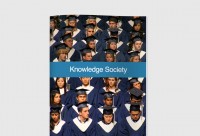Open Organizations: How They Work
From communism to capitalism and virtually every kind of socio-economic system of organization in-between there has been the same underlining principle, that only formal closed institutions could coordinate social systems and generate value at scale. However, today with the major changes in technology and society that are underway, this assumption can no longer be said to be valid. With information technology, the genie is out of the bottle and this institutional monopoly on large-scale coordination is over. The institutional model of closed organization that has served us well for many a century is today being stretched and undermined by the emerging new reality of a globalized interconnected information economy, the Wild Wild West of the 21st century where everything appears up for grabs in this brave new world of connectivity.
Both information technology and globalization are creating ever larger “spaces” in our societies and economies where traditional forms of organization are proving incapable of operating and creating an environment of open, unregulated, self-organizing systems. As more and more of our everyday life moves online, from shopping to education to dating and entertainment we increasingly find ourselves in this new unregulated world where formal organizations and the regulation they provide is becoming increasingly compromised and limited in scope.
In this paper, we discuss this fundamental change in institutional design that is taking place around the world today, a major process of disruption that no one can afford to overlook or dismiss. We talk about how connectivity changes the rules of the game, shifting the balance towards open organizations that are able to harness the capabilities of the mass of people on the so-called “long tail”. We look at the nature of these informal organizations and how management has to shift fundamentally to an open, self-organizing, emergent model when dealing with this new context. We look at how I.T. greatly enables collective action and the capacity for us to harness a diversity of motives for collaboration instead of depending upon traditional extrinsic positive and negative incentive systems. Finally, we look at the new model of “trustless” trust that blockchain technology provides and how this will work as a critical next generation infrastructure layered on the internet to enable the ongoing proliferation of decentralized and open organizations.










